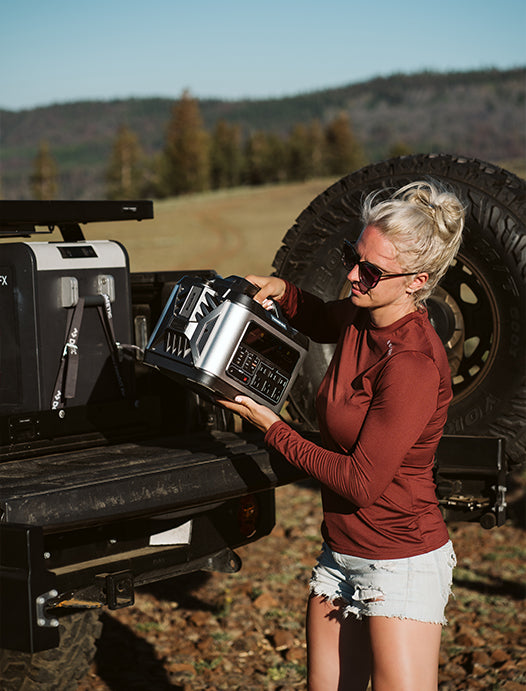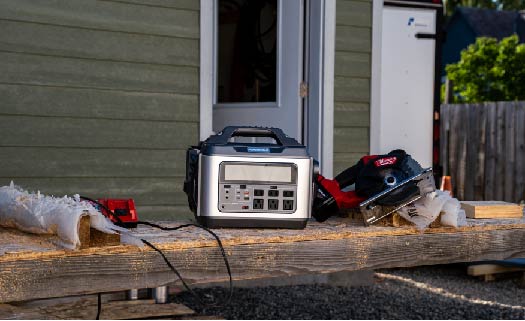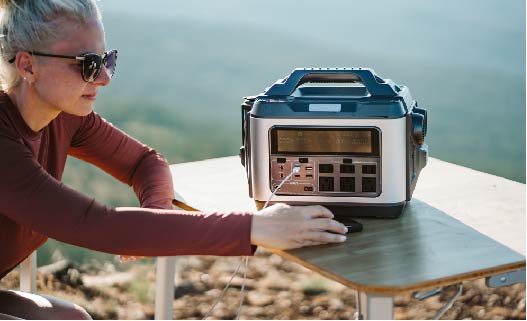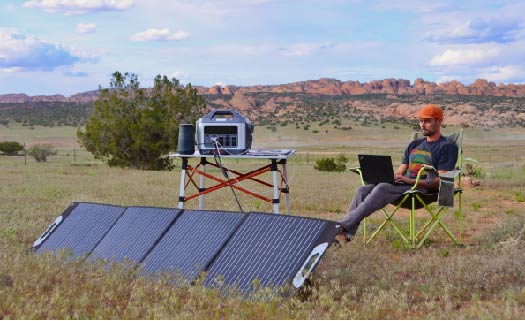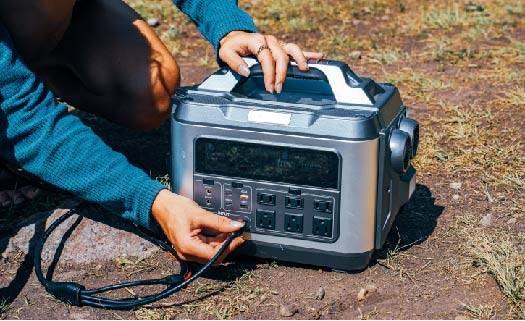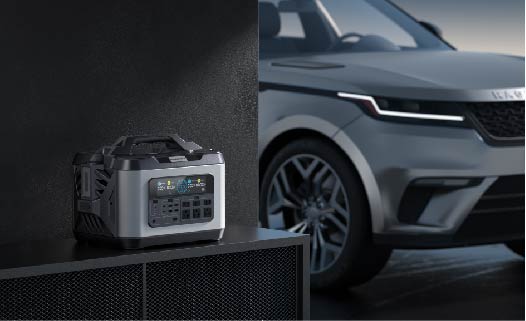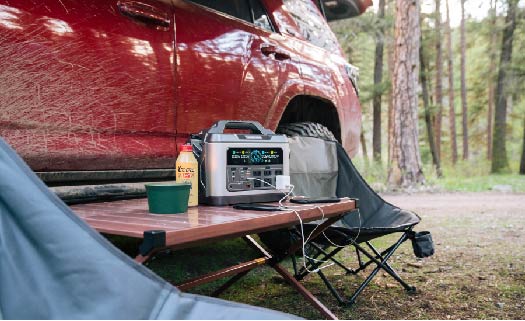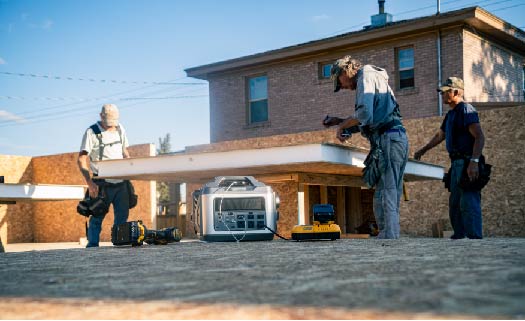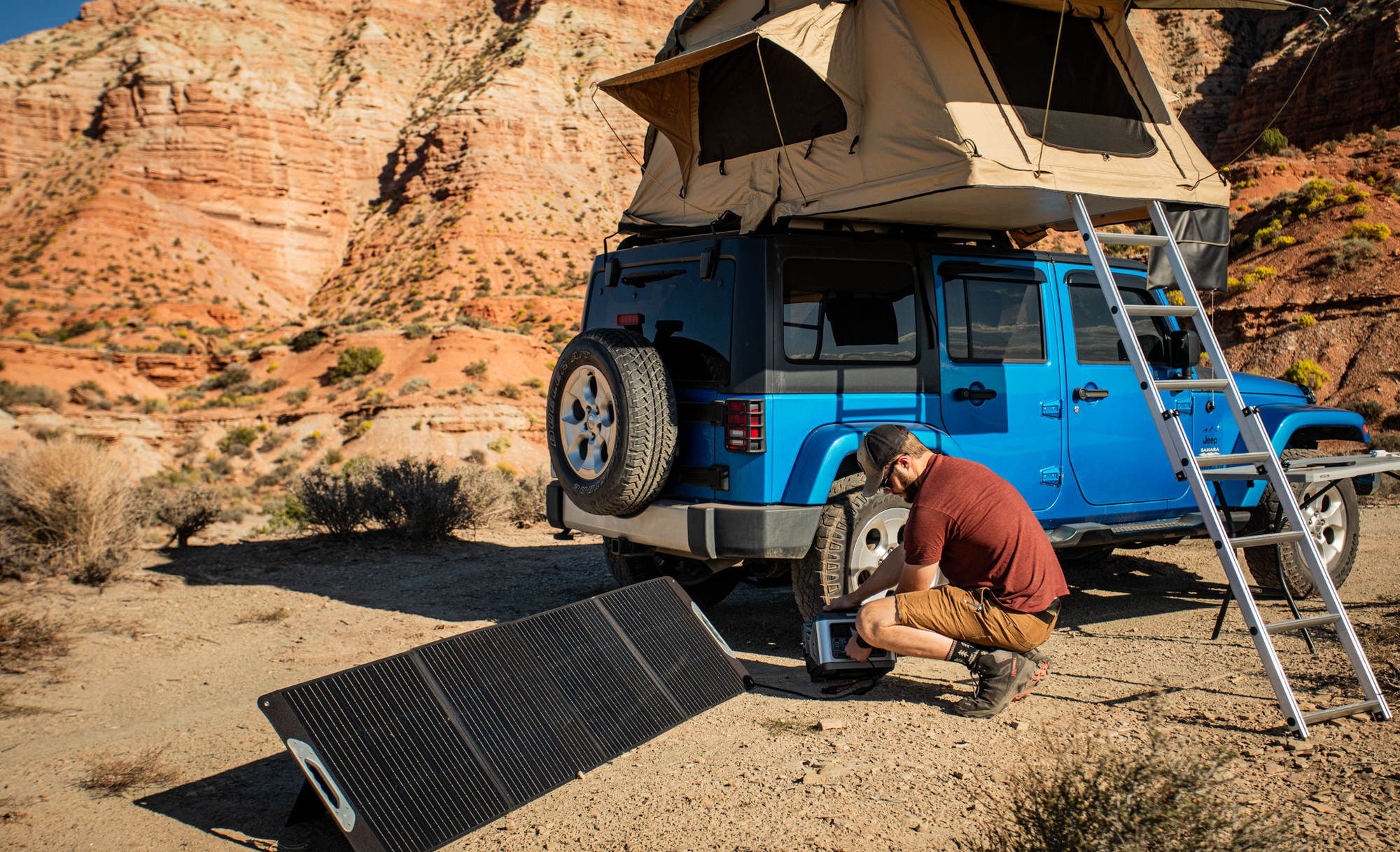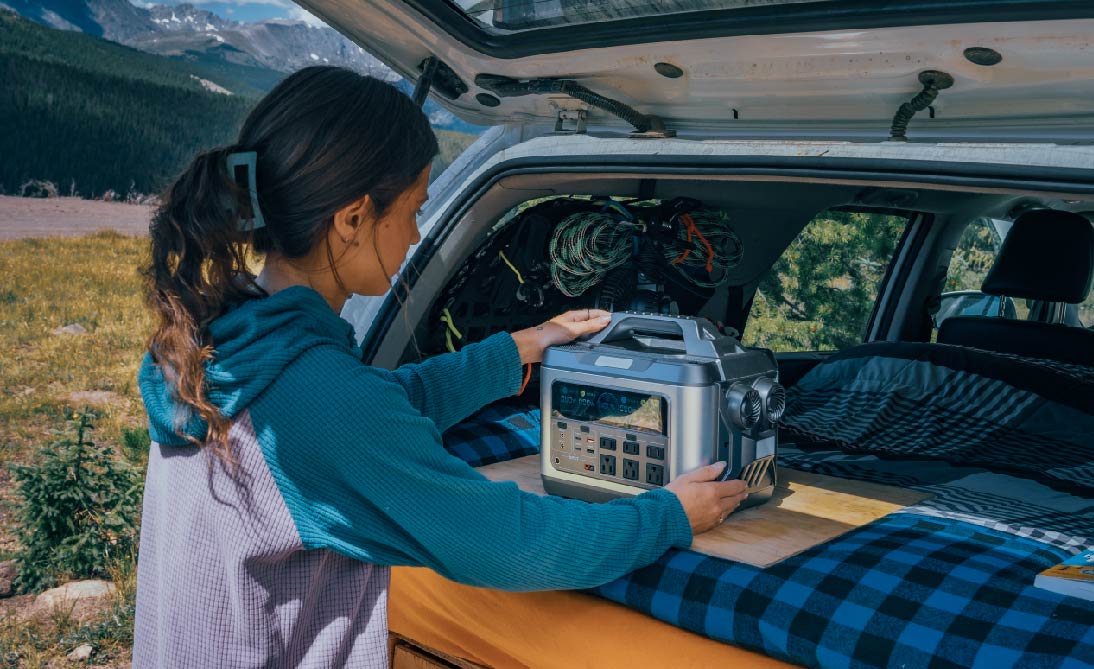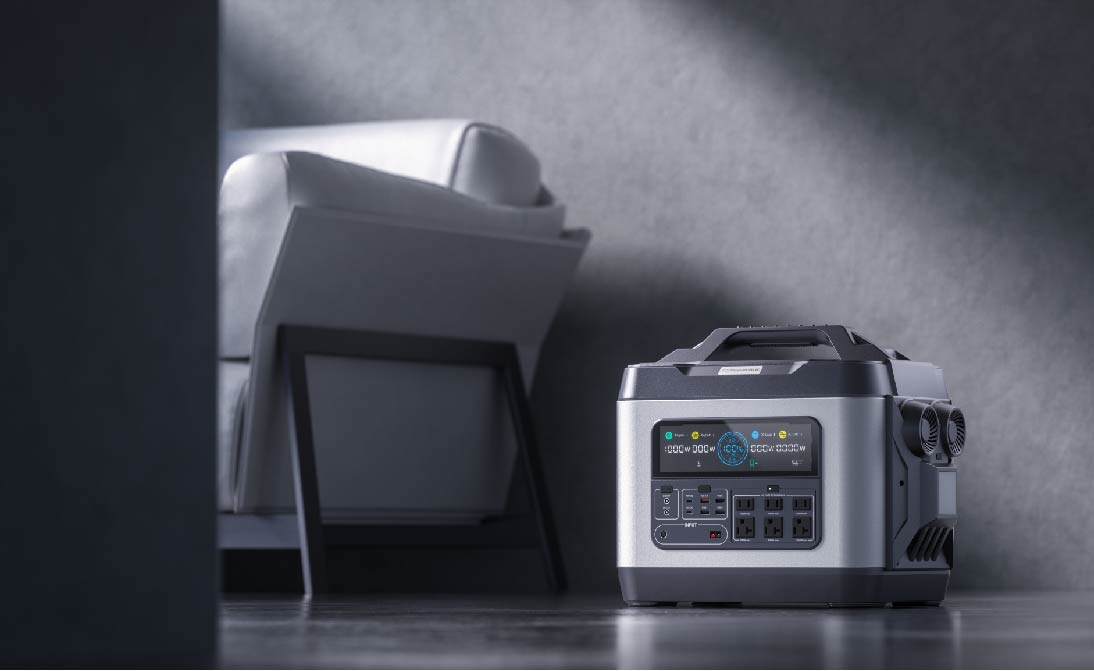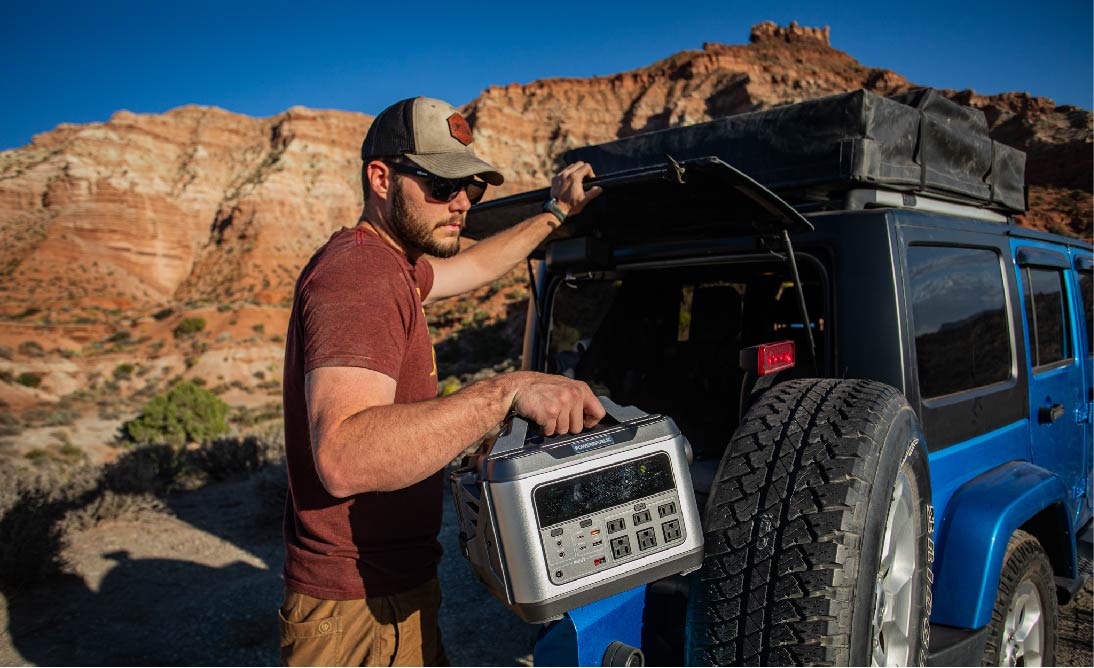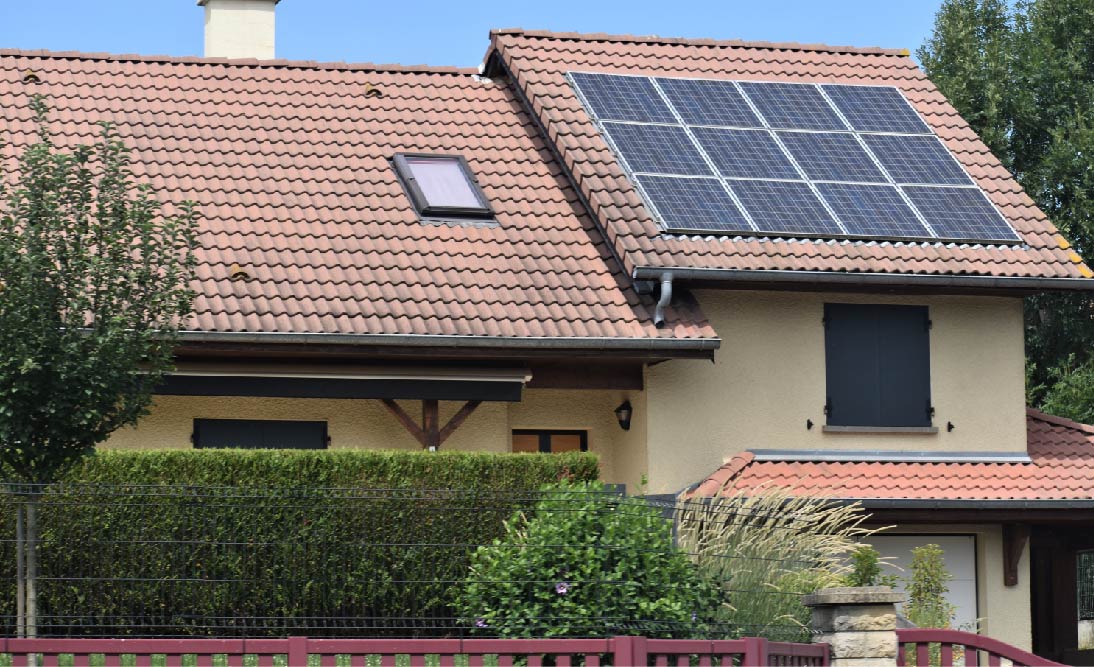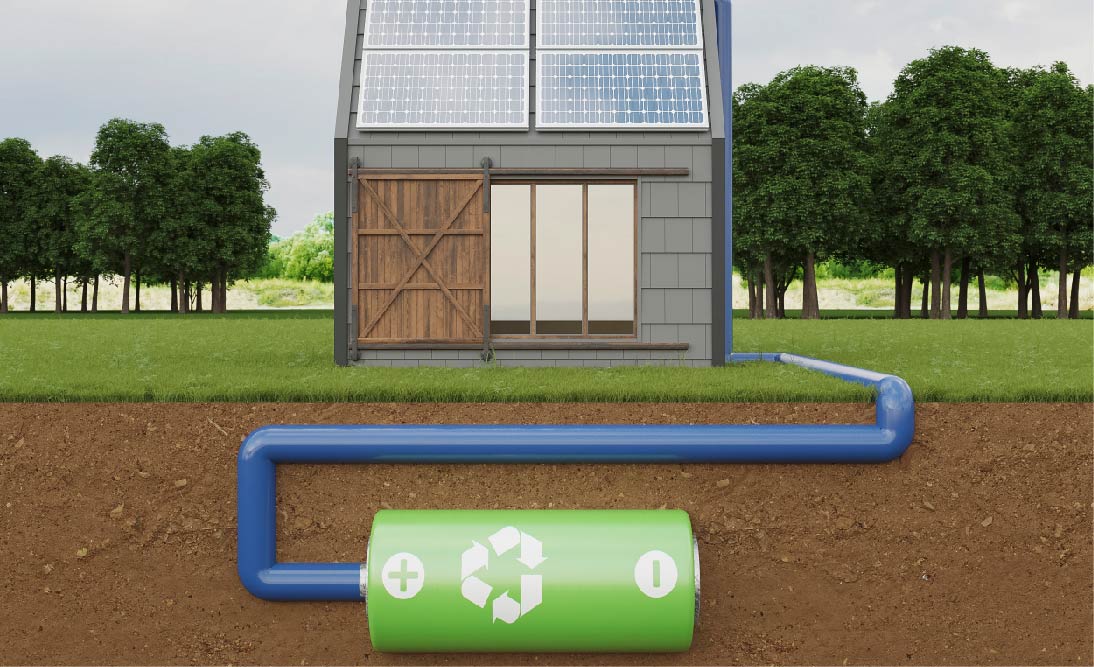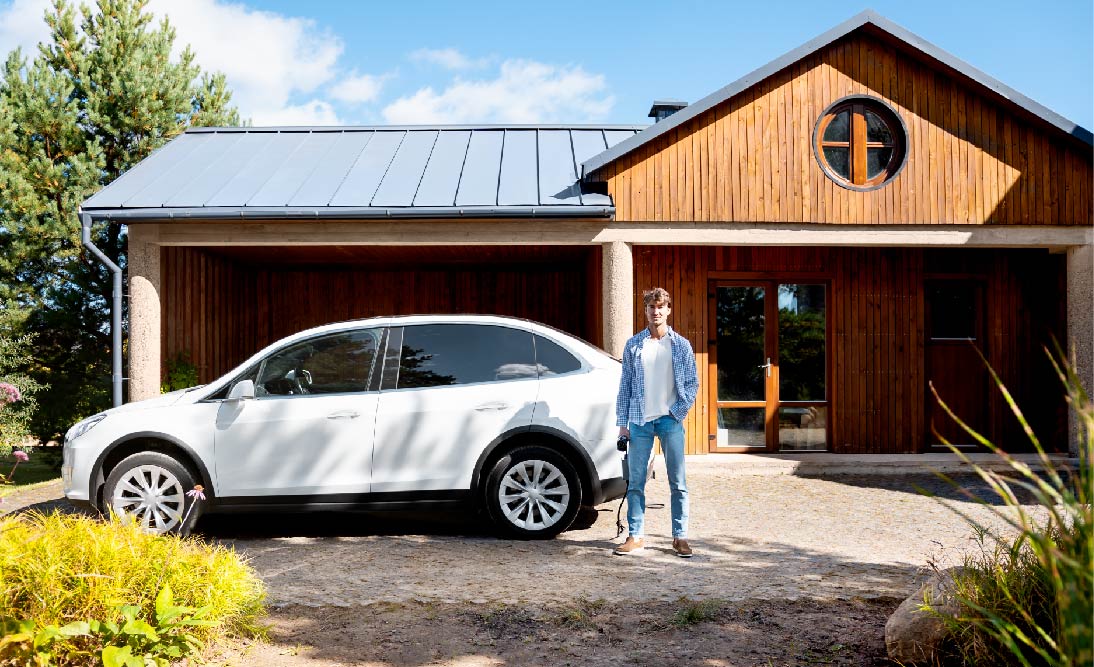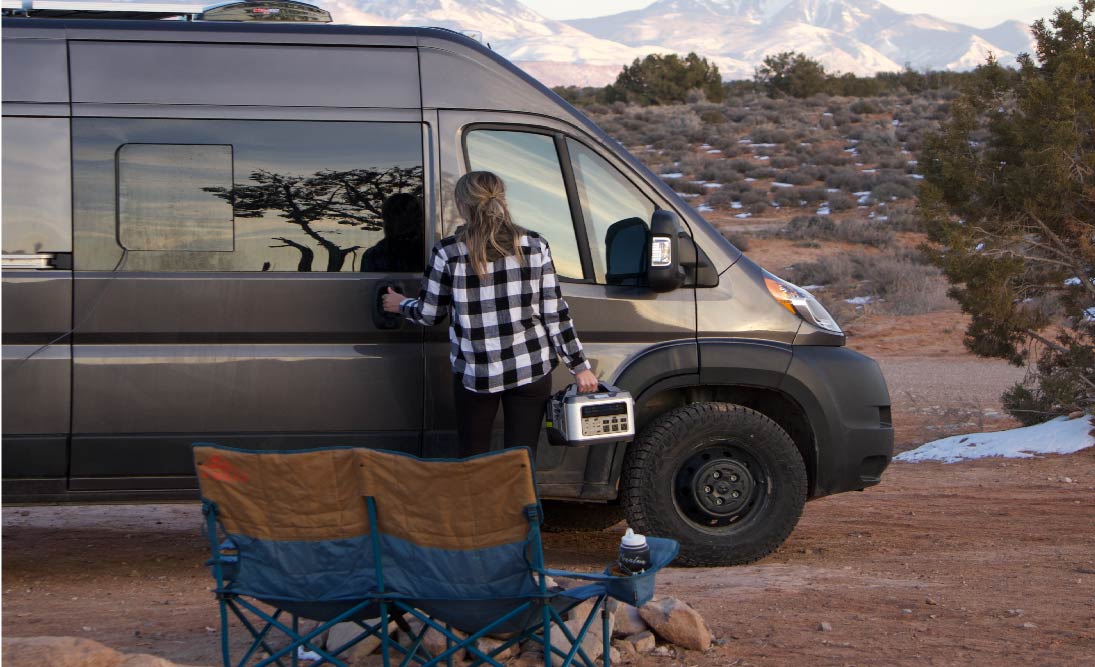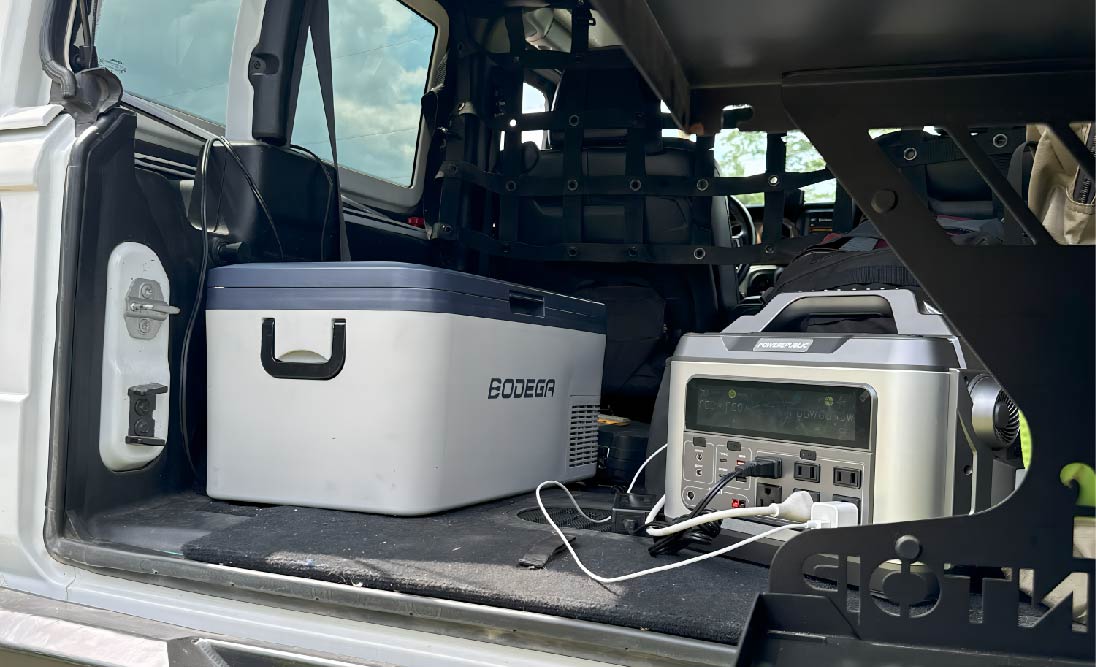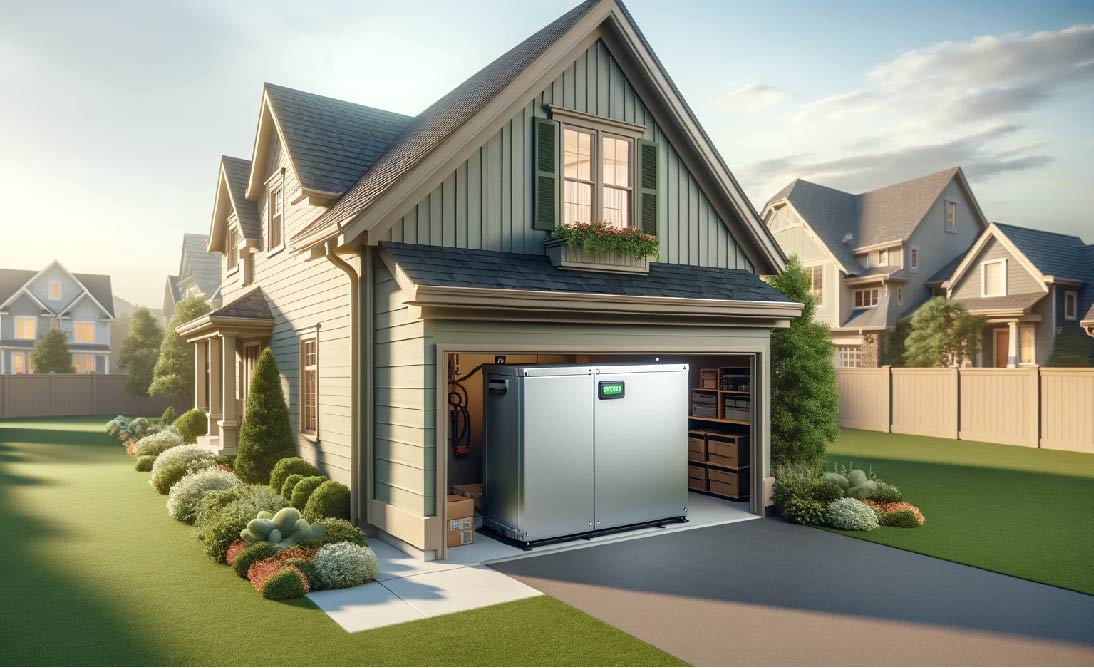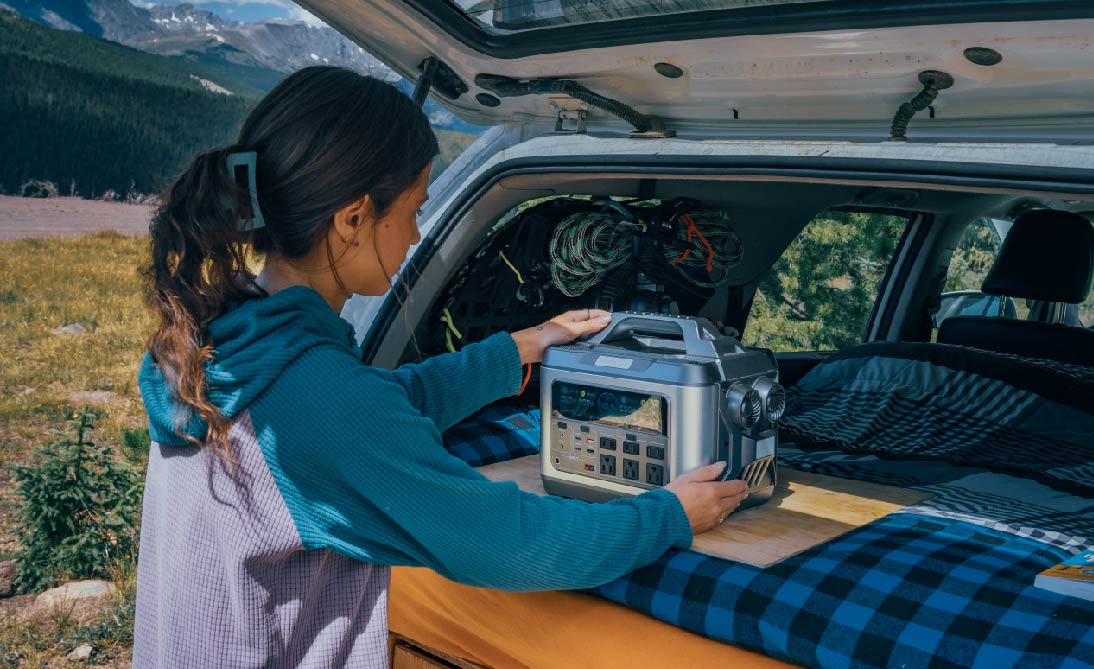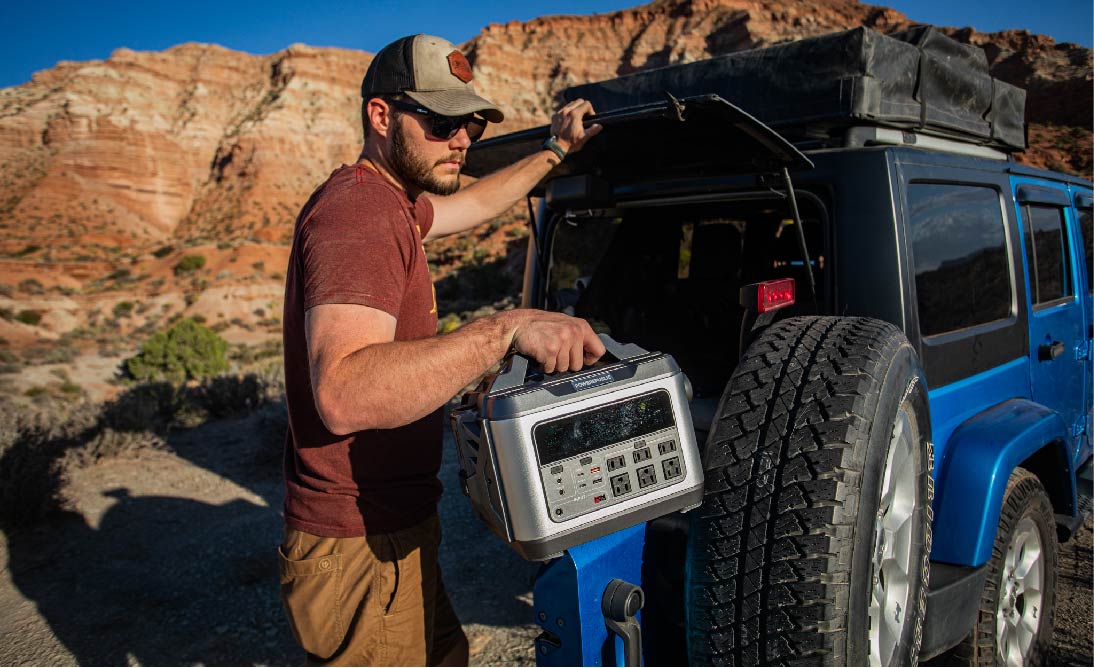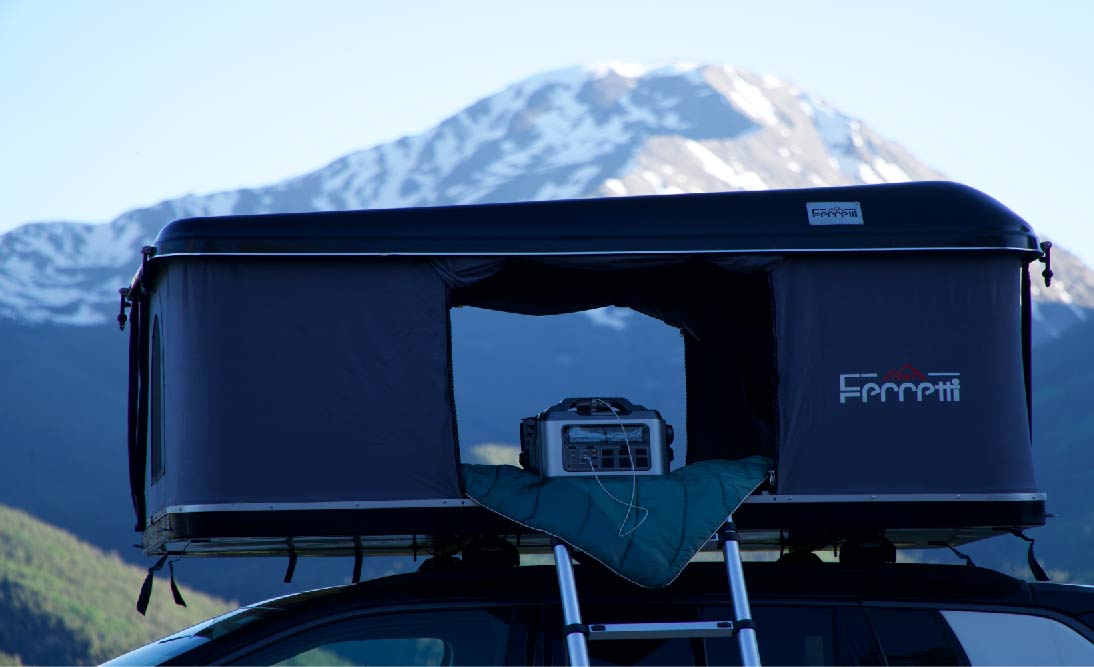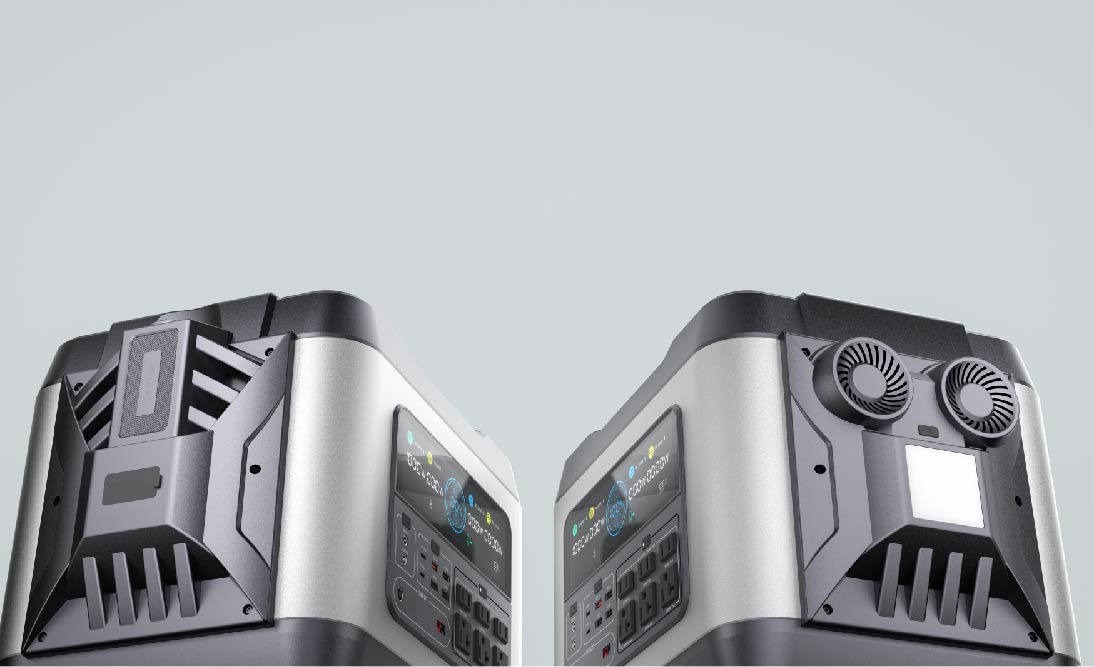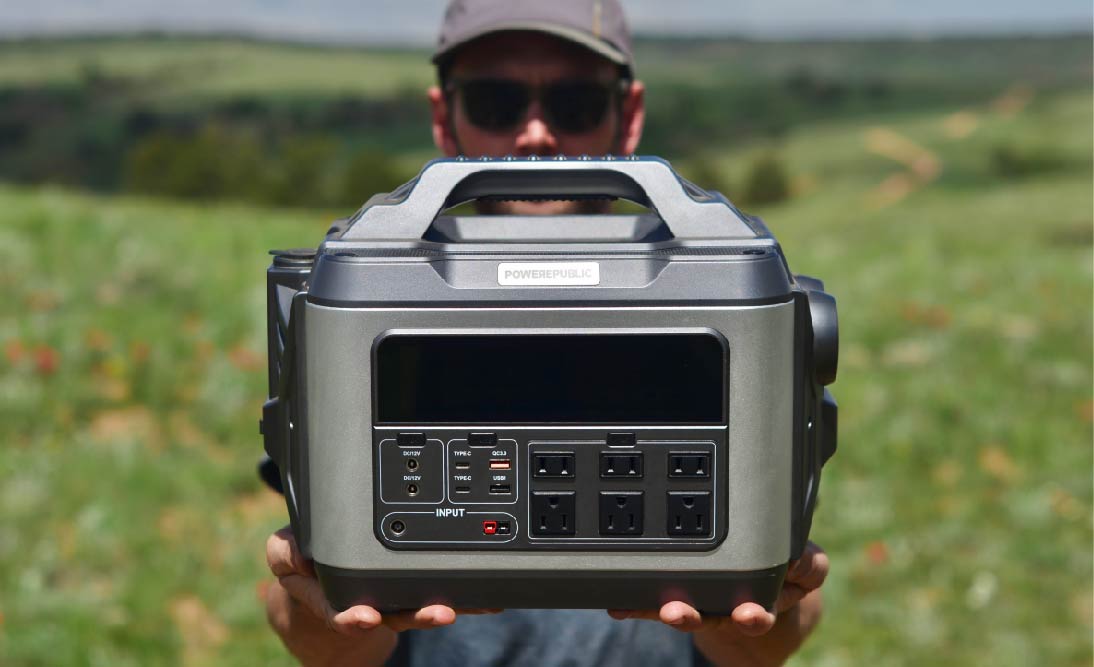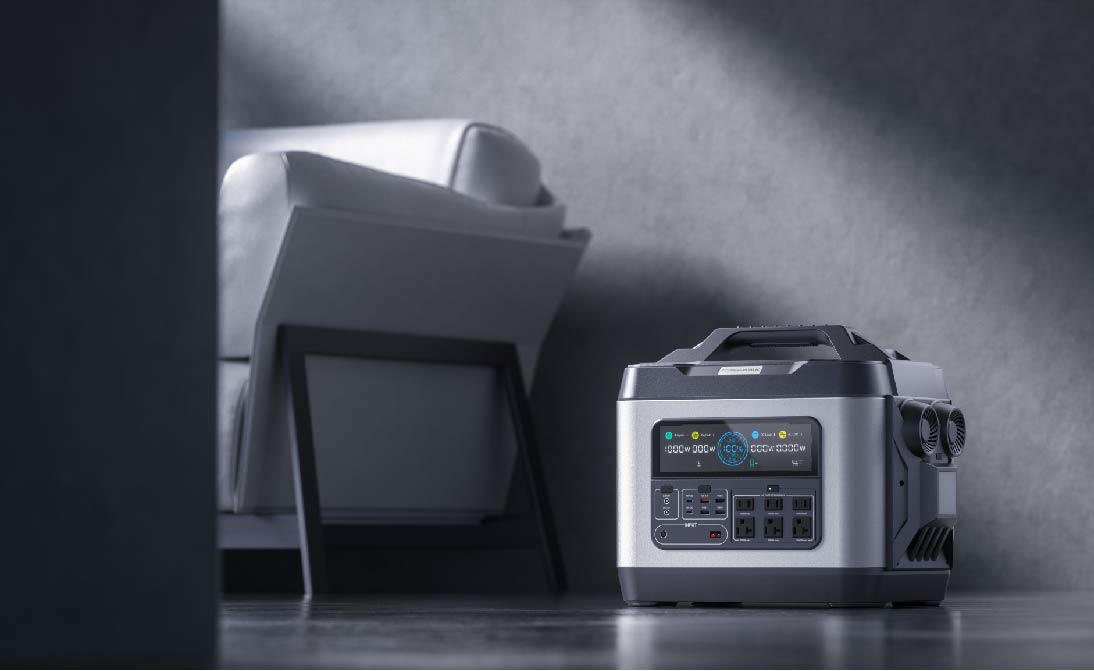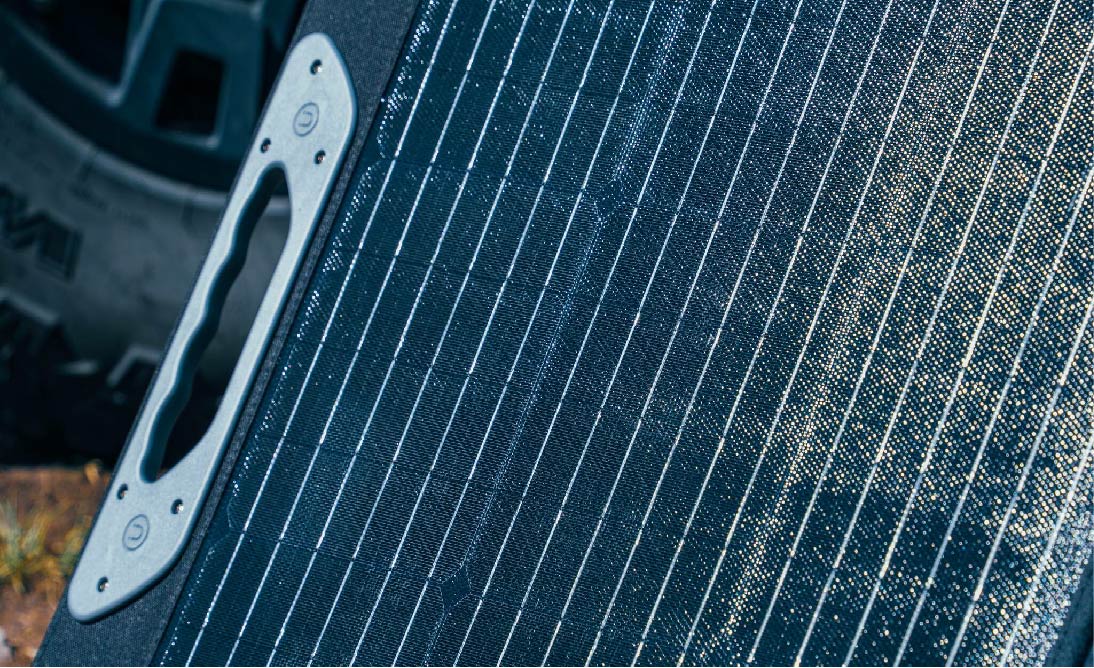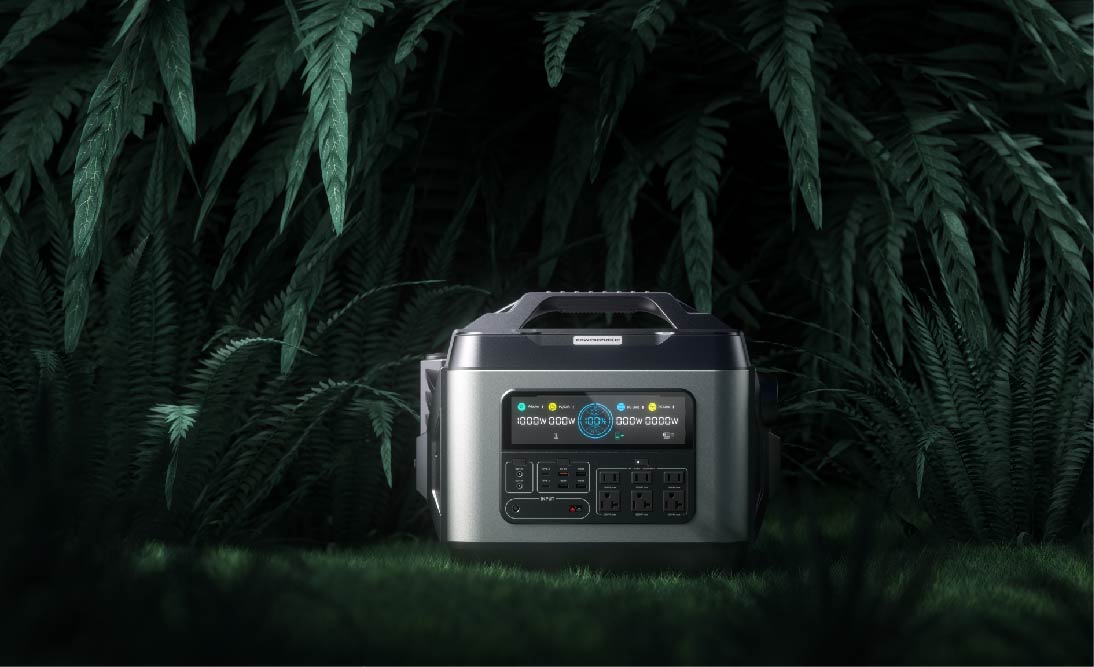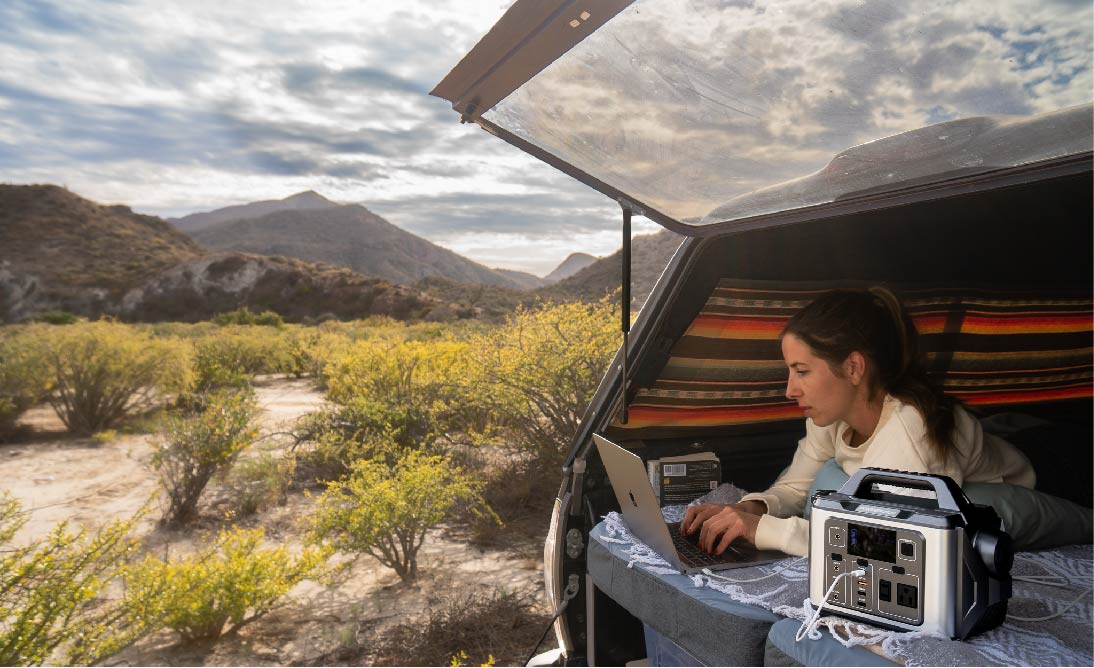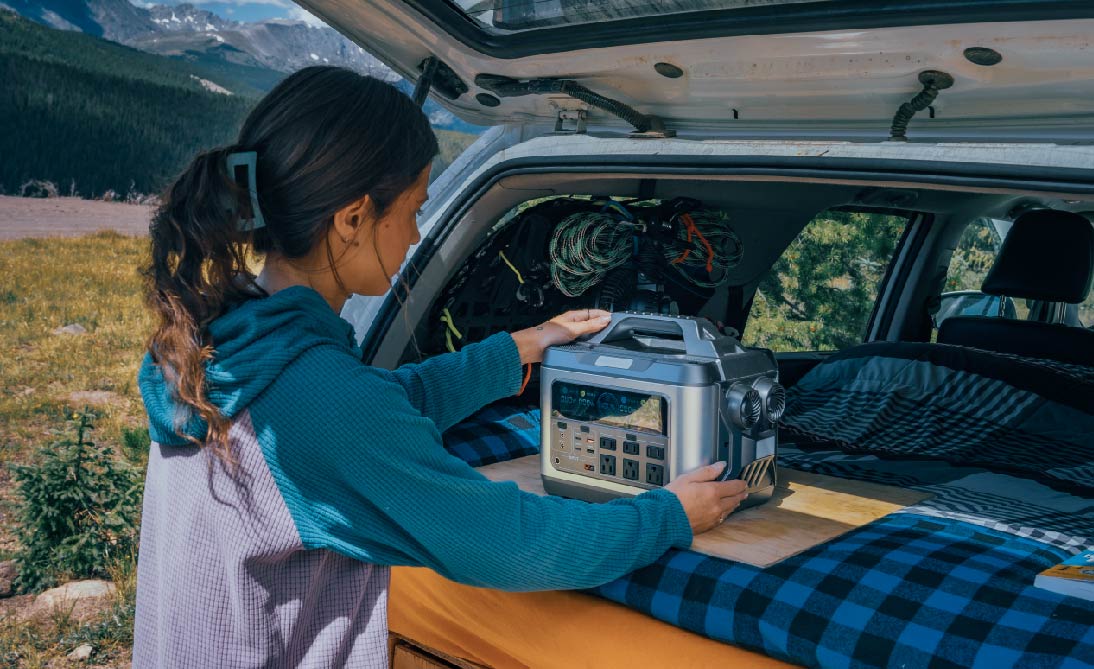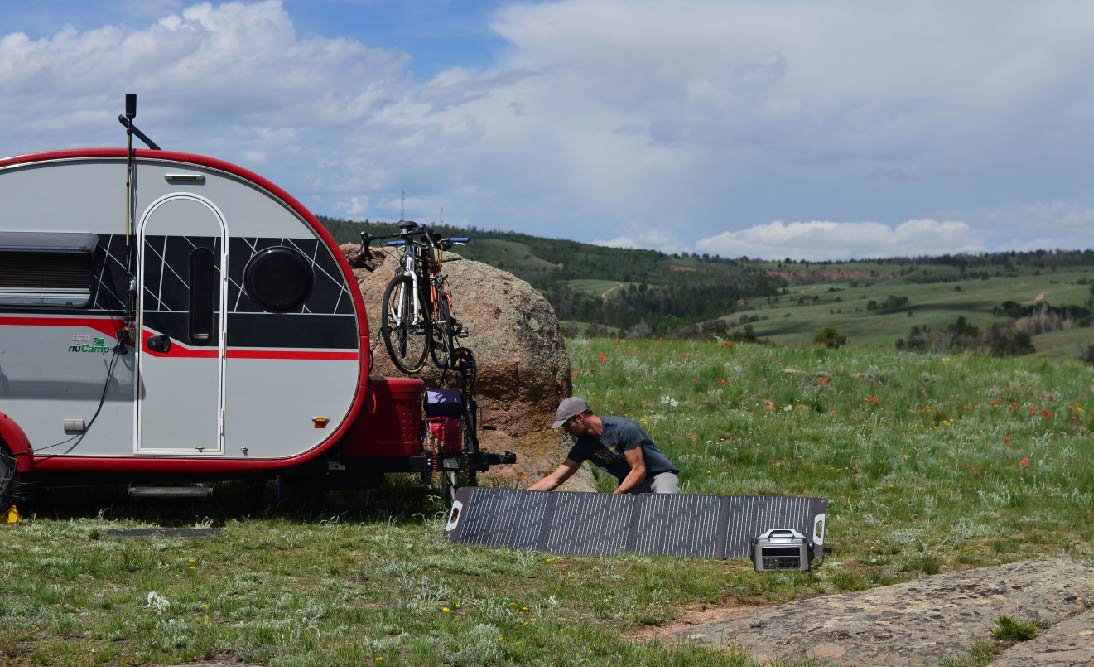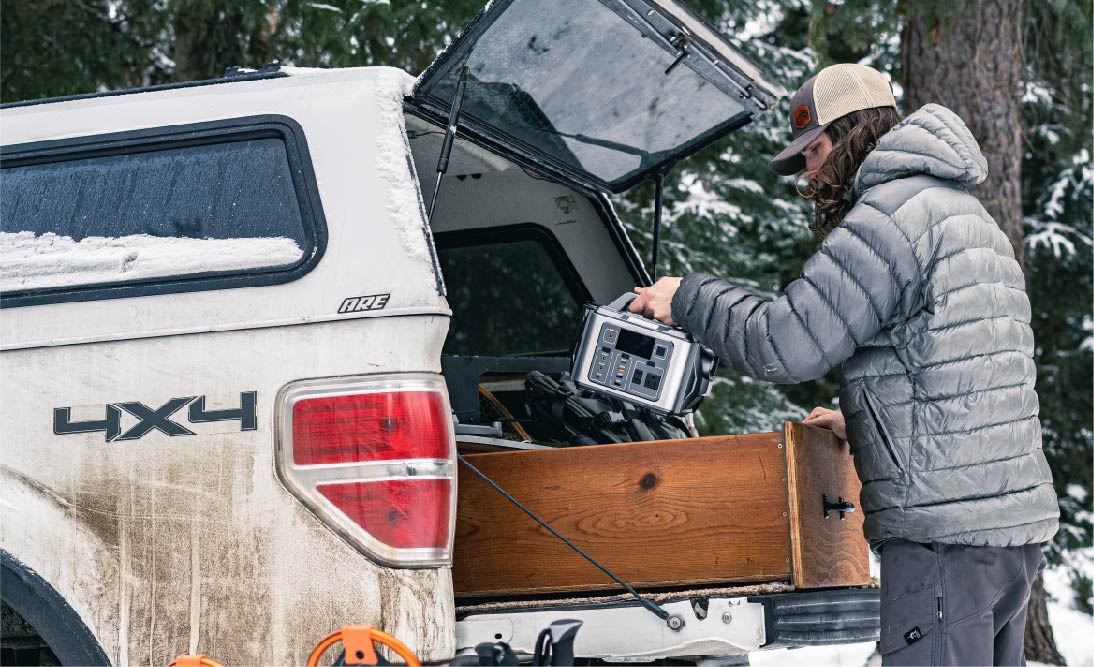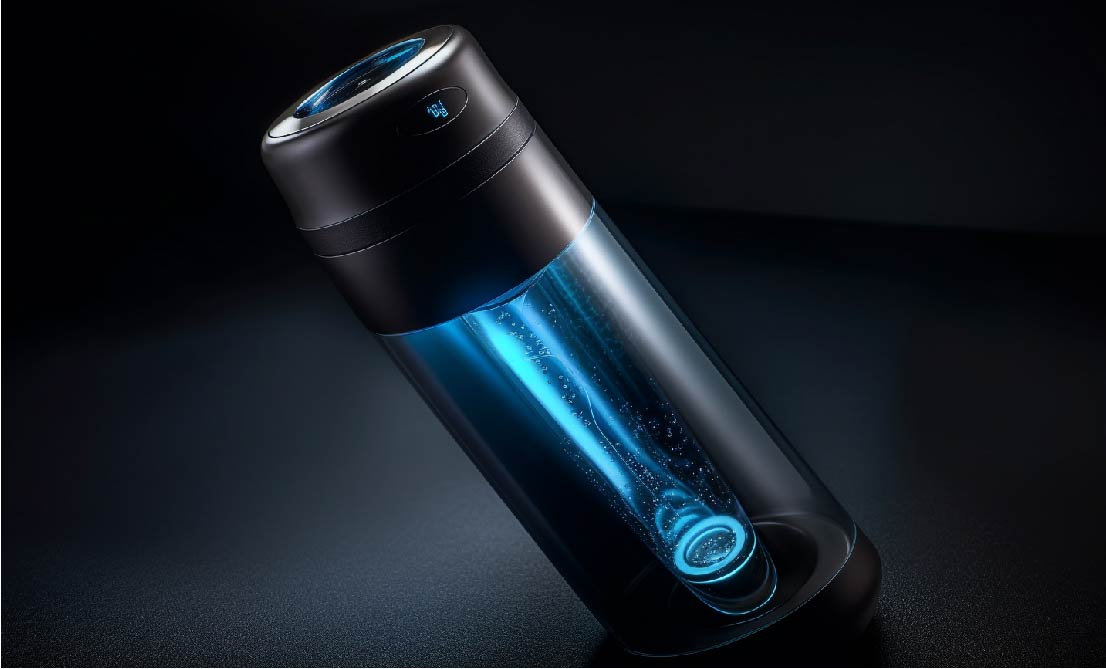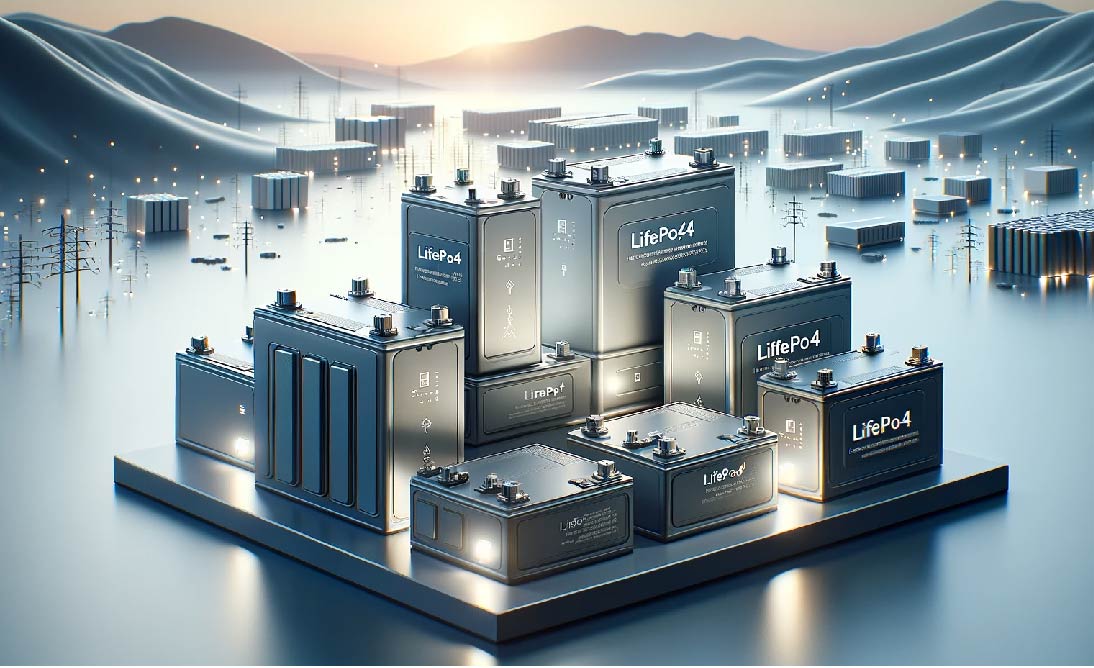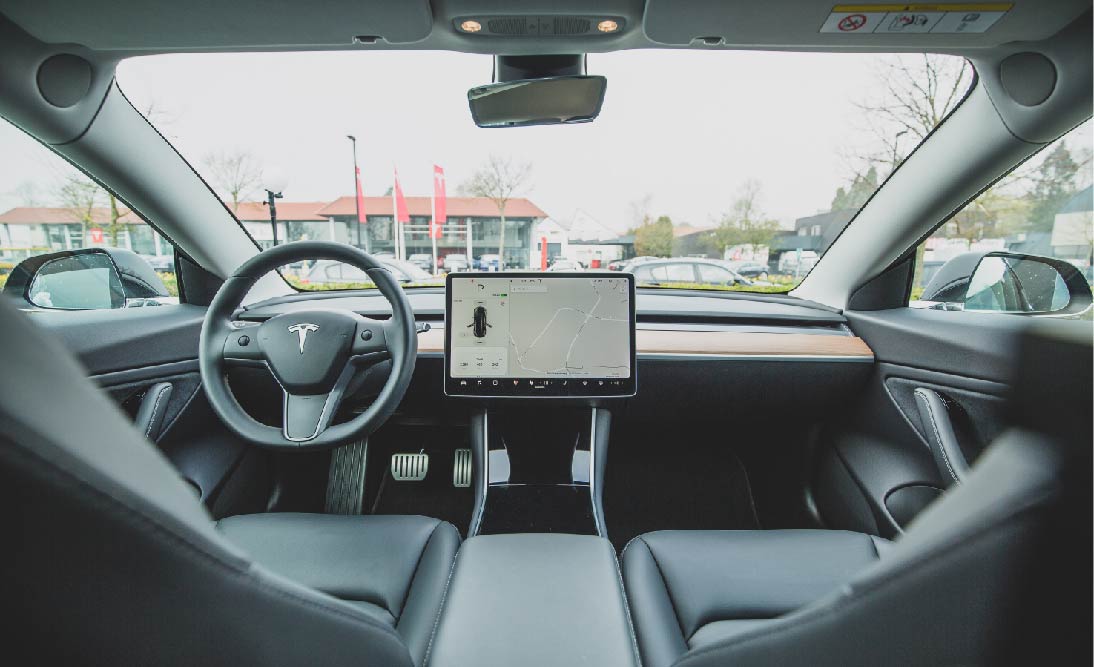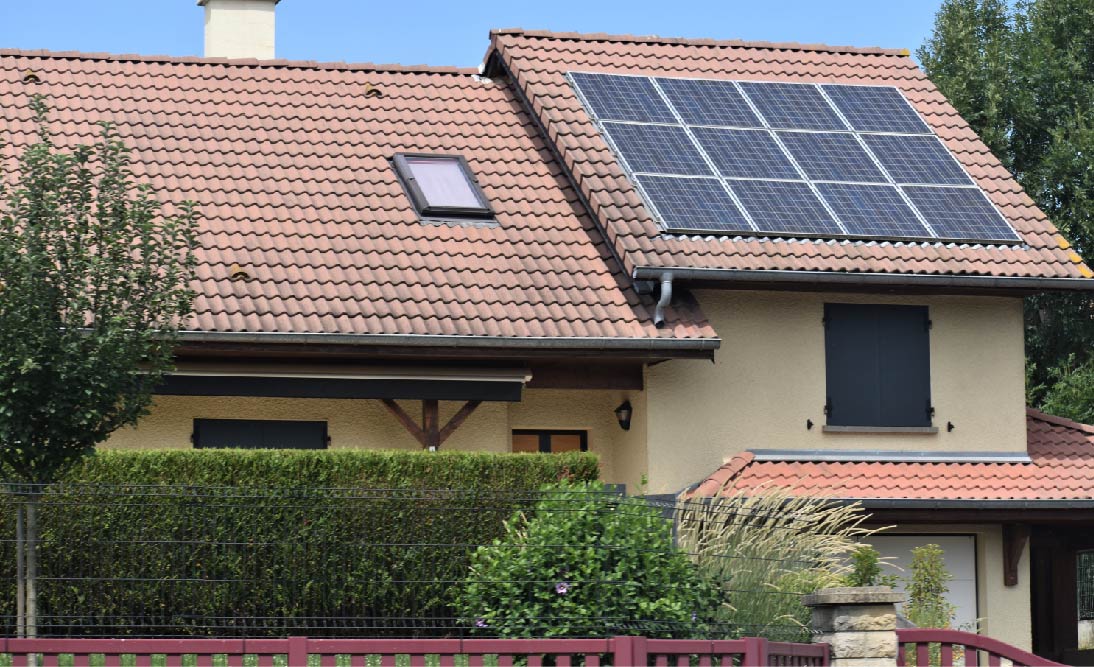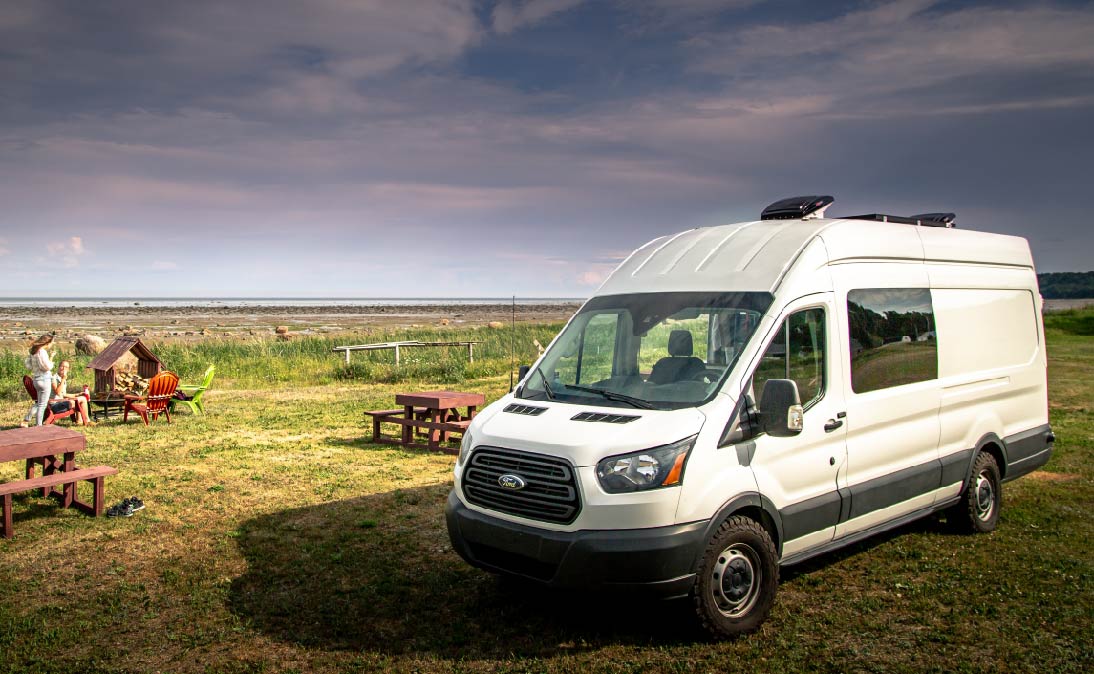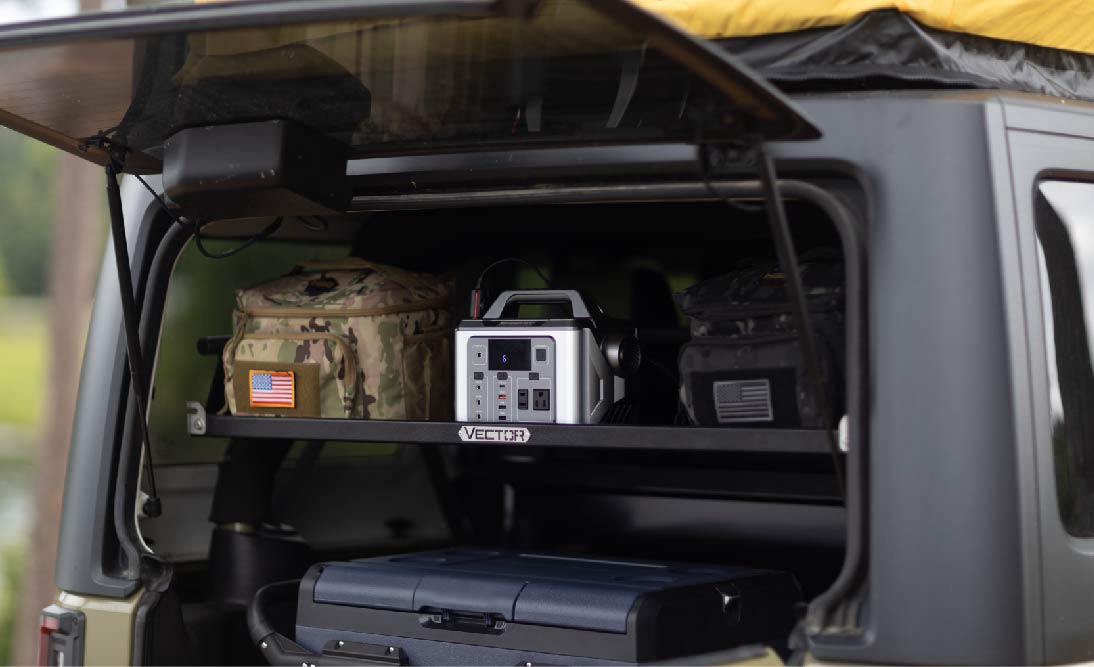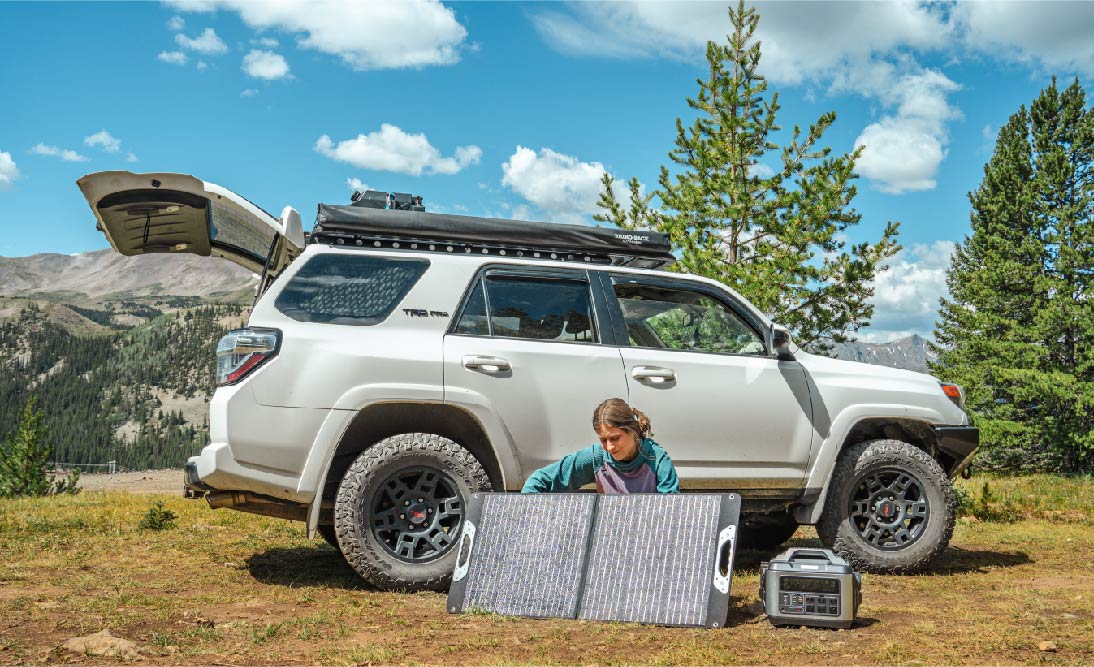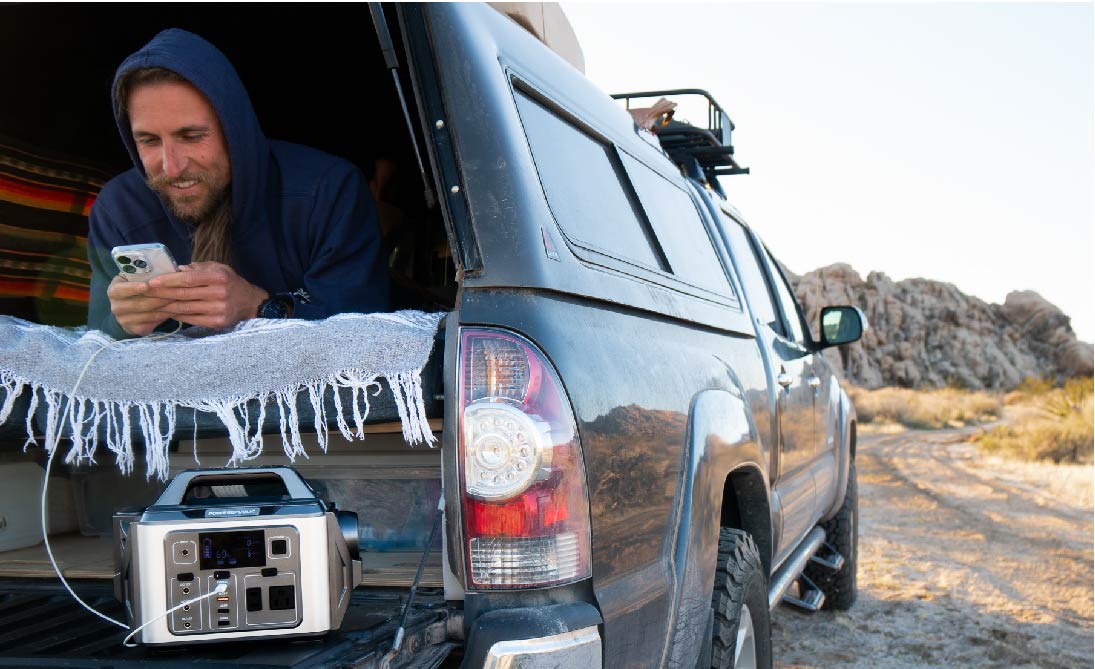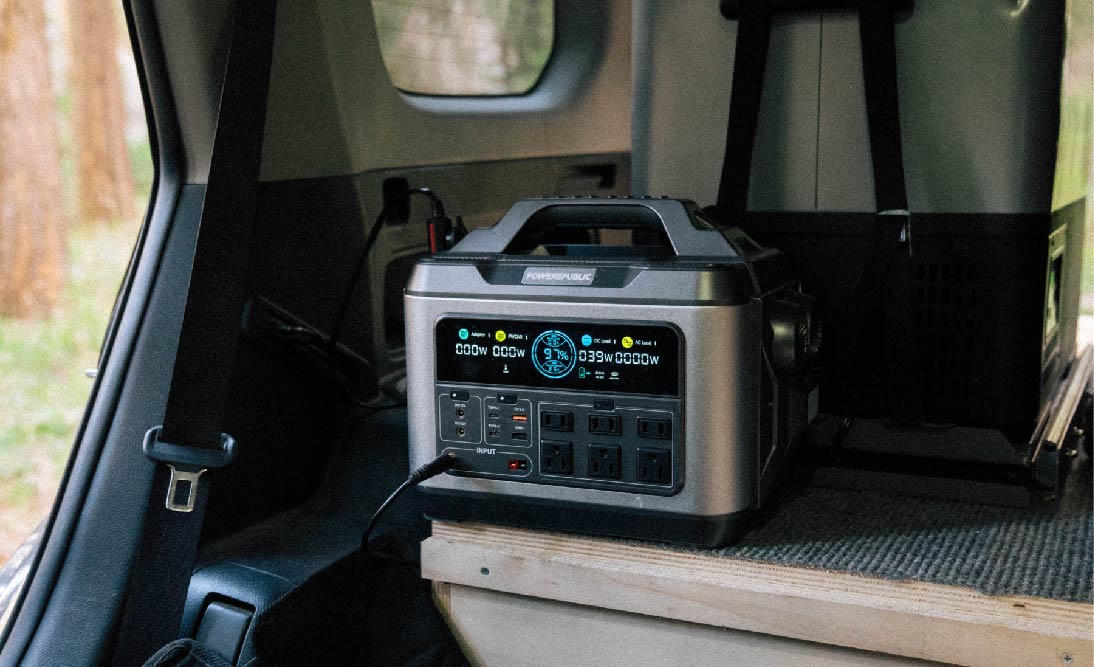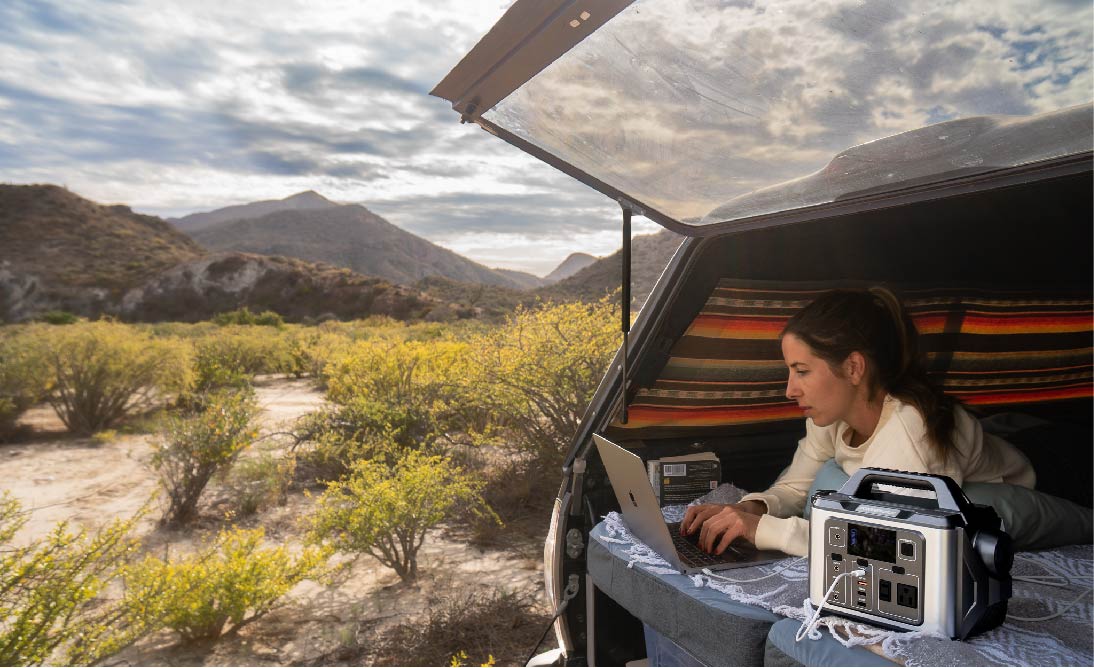Table of Contents:
-
Pros and Cons Of Using a Portable Power Station Run a Refrigerator
-
How To Select The Best Portable Power Stations To Run a Refrigerator?
-
FAQ II: Can a Portable Power Station Run an Electric Blanket?
-
FAQ IV: Can a Portable Power Station Run an Air Conditioner?
Heading outdoors is a blast, surrounded by nature's beauty. But, keeping your food and drinks cool is a must for a seamless experience. This leads us to a crucial question: Can a Portable Power Station Run a Refrigerator? In this guide, we'll tackle that query, along with key factors to consider, the pros and cons, and tips for choosing the right portable power station. Let's make sure your outdoor escapades are both exciting and hassle-free.
Can a Portable Power Station Run a Refrigerator?

Yes, it can!
However, several key factors need consideration, including the type and power rating of the refrigerator, the intended duration of power usage, the power output and battery capacity of the portable power station, and weather conditions.
Let's delve into each aspect:
1. Type and Power of the Refrigerator
-
A mini-fridge may require 50-100 watts per hour, whereas a full-size refrigerator could consume between 100 to 800 watts per hour.
-
Additionally, a full-size refrigerator needs starting power, typically double or triple its rated power, for a successful initial run. For instance, an 800W refrigerator may require 1600W or 2400W during startup.
2. Duration
-
Determining how long you plan to power the refrigerator aids in assessing the required power output and battery capacity of the portable power station.
-
If running a mini-fridge for 12 hours daily, a 100-watt mini-fridge would need 1000 Wh of energy (100 W * 10 hours). If the mini-fridge features an energy-saving mode (usually 10-20% less power consumption), the requirement would be between 800Wh to 900Wh.
-
For a full-size refrigerator operated for 5 hours daily, an 800-watt unit would need 4000Wh (800W * 5 hours). With an energy-saving mode, the requirement would be reduced from 3200Wh to 3600Wh.
-
You can use the formula to estimate for how long a portable power station can power your devices and appliances: Duration(hours)= Capacity of the Portable Power Station(Wh) * 0.85(conversion rate) / Power of Your Devices and Appliances(W)
3. Power Output and Battery Capacity of the Portable Power Station
-
Portable power stations offer a power output ranging from 300W to 3000W or more, with battery capacities spanning 300Wh to 3200Wh or more.
-
To power a 100W mini-fridge for 10 hours, a portable power station with at least 1000W and 1200Wh is needed. Similarly, for an 800W full-size refrigerator running for 5 hours, a power station with at least 3000W and 4500Wh is required.
-
It's crucial to note that the battery capacity should be higher due to the portable power station's 80-90% conversion rate. Also, accounting for simultaneous power needs for other devices is essential.
-
We recommend using a portable power station to power a mini-fridge. However, for a full-size refrigerator, a portable power station will only be capable of powering it for 2 to 3 hours. Therefore, we recommend using it primarily during power outages. If you intend to power it for an extended duration, it is advisable to switch to a dedicated power system rather than relying on a portable power station.
4. Weather Condition
-
Refrigerators in hot environments may demand 20% more power to maintain the same temperature. Hence, it's essential to consider this factor if you observe an increase in the power consumption of your mini-fridge or full-size refrigerator.
Taking these factors into consideration will better answer the question: Can a Portable Power Station Run a Refrigerator? Also, it will help you select the best portable power station for your mini-fridge or full-size refrigerator.
Pros and Cons Of Using a Portable Power Station Run a Refrigerator

As mentioned above, we recommend using a portable power station to power a mini-fridge.
However, for a full-size refrigerator, a portable power station may not be capable of powering it for a longer time. Therefore, we recommend using it primarily during power outages. If you intend to power the full-size refrigerator for an extended duration, it is advisable to switch to a dedicated power system rather than relying on a portable power station.
Let’s take a look at the pros and cons of using a portable power station to run a refrigerator.
Pros of Using a Portable Power Station to Run a Refrigerator
-
Portability: Portable power stations are designed for mobility, allowing you to take them anywhere, including camping trips, outdoor events, or during power outages. This portability ensures that your refrigerator remains functional in various settings.
-
Versatility: Portable power stations are not limited to running refrigerators; they can power a variety of electronic devices, providing a versatile solution for your outdoor and emergency power needs.
-
Silent Operation: Unlike traditional generators, many portable power stations operate silently. This is advantageous for maintaining a peaceful outdoor environment without the noise typically associated with generator use.
-
Clean Energy: Most portable power stations use lithium-ion batteries, making them an eco-friendly option compared to traditional generators that rely on fuel combustion. This contributes to a cleaner and greener energy solution.
-
Ease of Use: Portable power stations are user-friendly, and often equipped with simple interfaces and multiple outlets. This makes them accessible to users with varying technical expertise.
-
No Fuel Requirements: Unlike traditional generators, portable power stations do not require fuel, reducing the need for fuel storage, potential spillage, and the associated safety concerns. This makes them a safer and more convenient option.
-
Low Maintenance: portable power stations generally have minimal maintenance requirements. There are no oil changes or complex mechanical components to manage, simplifying their upkeep.
Cons of Using a Portable Power Station to Run a Refrigerator
-
Limited Capacity: Portable power stations may have limited power capacity compared to traditional generators. This limitation could affect the runtime of a refrigerator, especially if it's a high-power model or if you intend to run it for extended periods.
-
Dependency on Battery: Portable power stations rely on battery storage, and once the battery is depleted, it needs recharging. If you're in a situation without access to a power source, you may face interruptions in refrigerator operation until the power station is recharged.
-
Initial Cost: The upfront cost of a quality portable power station can be higher compared to traditional generators. However, this cost may be offset by the long-term benefits and reduced maintenance expenses.
-
Charging Time: The charging time of portable power station batteries can vary. If you need a quick turnaround for recharging, this might be a limitation. Fast-charging models are available, but they may come at an additional cost.
-
Weather Dependency: Extreme weather conditions, such as very high or low temperatures, can impact the performance of the battery in a portable power station. This may reduce its efficiency, especially in challenging environments.
-
Limited Power for Larger Appliances: Some portable power stations may not provide sufficient power for larger or high-energy appliances, such as large refrigerators with multiple features. It's crucial to match the power station's capacity with the refrigerator's requirements.
-
Non-Suitable for Continuous Use: Portable power stations are designed for intermittent use and may not be suitable for continuous operation. This limitation could affect scenarios where a refrigerator needs to run continuously for an extended period.
Note: The pros and cons may vary based on the specific model and brand of the portable power station. It's essential to carefully evaluate the features and specifications of the chosen power station to ensure it meets your refrigerator's requirements and your intended use.
How To Select The Best Portable Power Stations To Run a Refrigerator?

There are two types of refrigerators: mini-fridges (with power requirements ranging from 50W to 100W) and full-size refrigerators (with power needs ranging from 100W to 800W). Each of them requires different powers for startup and operation.
Now, let's explore how to select the ideal portable power station for each.
For Mini-Fridges
1. Power Capacity
-
Assess the power requirements of your mini-fridge. Select a portable power station with a power output that exceeds the wattage needs of the mini-fridge, providing a safety margin for efficient and reliable operation.
-
For example, if your mini-fridge requires 100 watts, consider a power station with at least 150 watts to accommodate fluctuations.
2. Battery Capacity
-
Since mini-fridges are often used for shorter durations, focus on a portable power station with a battery capacity that aligns with your intended usage.
-
As an example, if you plan to run the mini-fridge for 10 hours per day, choose a power station with a capacity of at least 1200 watt-hours (Wh).
3. Portability
-
Prioritize portability for on-the-go use. Look for a compact and lightweight power station with a convenient handle for easy transportation during outdoor activities.
4. Charging Options
-
Opt for a power station with various charging options. For instance, the model offers multiple input ports, including AC, solar, and car, providing flexibility for recharging, even in off-grid scenarios.
5. Energy-Saving Features
-
Explore power stations with energy-saving features to optimize consumption., which offers a smart energy management system that adjusts output based on device requirements, extending the runtime.
For Full-Size Refrigerators
1. Power Capacity
-
Given the higher power demands of full-size refrigerators, select a portable power station with a substantial power output.
-
For example, if your full-size refrigerator requires 800 watts, consider the models with at least 2000W continuous output to handle both standard and startup power needs.
2. Extended Runtime
-
Prioritize a larger battery capacity for extended operation during power outages that can support a full-size refrigerator for an extended duration, reducing the need for frequent recharging.
-
For example, a 3200Wh battery capacity is needed if you want to power your full-size refrigerator for 2 or 3 hours during power outages. If you want to power it for a longer time, you will need a battery capacity that is greater than 3200Wh.
3. Compatibility with Energy-Hungry Appliances
-
Confirm compatibility with larger appliances by choosing a power station with robust features. Models with AC outlets and multiple charging options are suitable for powering a full-size refrigerator and other high-energy devices.
4. Quick Recharging Features
-
Opt for a power station with fast-charging capabilities to minimize downtime which enables quick recharging, ensuring your full-size refrigerator remains operational during extended outages.
5. Weather Resistance
-
For reliability in various conditions, select a power station with weather-resistant features that has a sturdy build and is equipped to handle challenging weather scenarios, ensuring continuous power for your refrigerator.
6. Built-In Inverter
-
Choose a power station with a built-in inverter(pure sine wave)for compatibility with appliances like refrigerators that may have sensitive electronics.
By carefully considering these factors and selecting power stations like the mentioned examples, tailored to the specific requirements of your mini-fridge or full-size refrigerator, you can ensure a reliable and efficient power source for various scenarios.
POWEREPUBLIC Portable Power Station To Run a Refrigerator

If you are looking for a durable, rugged-looking, and safe portable power station to keep your mini-fridges or full-size refrigerator charged, consider POWEREPUBLIC portable power stations.
For a better understanding and comparison, we have created a table listing our four models with their features and detailing how long each of them can run a mini-fridge or a full-size refrigerator.
|
Models |
Features |
Devices(W) |
Duration(hours) |
|
300W/296Wh Peak 600W 10 Output Ports 9.2Ibs - Portable |
Mini-Fridges(50W - 100W) Full-Size Refrigerators(100W - 800W) |
Mini-Fridges: 2.5 - 5 Full-Size Refrigerators: Not Recommend |
|
|
1200W/1110Wh Peak 2600W 13 Output Ports |
Mini-Fridges(50W - 100W) Full-Size Refrigerators(100W - 800W) |
Mini-Fridges: 9.5 - 18.5 Full-Size Refrigerators: 1 - 9.5 |
|
|
2200W/2240Wh Peak 4500W 15 Output Ports LiFePO4 Batteries with 3000+ Cycles |
Mini-Fridges(50W - 100W) Full-Size Refrigerators(100W - 800W) |
Mini-Fridges: 19 - 38 Full-Size Refrigerators: 2 - 19 |
|
|
3000W/3200Wh Peak 6000W 15 Output Ports LiFePO4 Batteries with 3000+ Cycles |
Mini-Fridges(50W - 100W) Full-Size Refrigerators(100W - 800W) |
Mini-Fridges: 27 - 54 Full-Size Refrigerators: 3.5 - 27 |
Please note that: We use the formula below to estimate how long a portable power station can power your devices and appliances:
-
Duration(hours)= Capacity of the Portable Power Station(Wh) * 0.85(conversion rate) / Power of Your Devices and Appliances(W)
-
The duration of your mini-fridge or full-size refrigerator will decrease if you power other devices and appliances at the same time.
FAQ I: Can a Portable Power Station Run a TV?

Yes, a portable power station can run a TV.
Always use the formula below to estimate the working time:
-
Duration(hours)= Capacity of the Portable Power Station(Wh) * 0.85(conversion rate) / Power of Your Devices and Appliances(W)
Here are some key considerations and details:
What to Do:
-
Check TV Power Consumption: Determine the power consumption of your TV. Most TVs have a power rating in watts, typically ranging from 50W to 400W.
-
Select the Right Power Station: Choose a portable power station with sufficient power output to handle your TV. Ensure that the power station's capacity exceeds the TV's power requirement.
-
Consider Duration: If you plan to run the TV for an extended period, calculate the energy consumption. For example, a 100W TV running for 5 hours would need 500Wh (100W * 5 hours).
-
Use Energy-Saving Settings: Some TVs have energy-saving settings that reduce power consumption. Activate these settings to maximize the runtime on the portable power station.
What Not to Do:
-
Exceed Power Limits: Avoid connecting a TV that exceeds the power limits of the portable power station. It can lead to overheating or damage.
-
Ignore TV Settings: Some TVs may have a quick-start feature or high-brightness settings that increase power consumption. Adjust settings to optimize energy efficiency.
-
Forget About Other Devices: Consider the combined power needed to run other devices simultaneously. Ensure the power station can handle the total load.
FAQ II: Can a Portable Power Station Run an Electric Blanket?

Yes, a portable power station can run an electric blanket.
Always use the formula below to estimate the working time:
-
Duration(hours)= Capacity of the Portable Power Station(Wh) * 0.85(conversion rate) / Power of Your Devices and Appliances(W)
Here's a detailed guide:
What to Do:
-
Check Blanket Power Rating: Electric blankets typically have a power rating in watts. Verify the power consumption, which can range from 50W to 200W.
-
Choose Appropriate Power Station: Select a portable power station with sufficient wattage to accommodate the electric blanket's power needs.
-
Consider Duration: Calculate the energy consumption based on how long you intend to use the electric blanket. For instance, a 100W blanket used for 8 hours would need 800Wh.
-
Monitor Temperature Settings: Adjust the electric blanket's temperature settings to optimize power usage and extend runtime on the power station.
What Not to Do:
-
Overload the Power Station: Avoid connecting too many devices to the power station simultaneously, as it may exceed its capacity.
-
Use Old or Damaged Blankets: Ensure your electric blanket is in good condition. Faulty blankets may consume more power or pose safety risks.
FAQ III: Can a Portable Power Station Run a Coffee Machine?

Yes, a portable power station can run a coffee machine.
Always use the formula below to estimate the working time:
-
Duration(hours)= Capacity of the Portable Power Station(Wh) * 0.85(conversion rate) / Power of Your Devices and Appliances(W)
Here's what you should know:
What to Do:
-
Check Coffee Machine Power: Determine the power consumption of your coffee machine. It can range from 500W for basic models to over 1000W for high-end machines.
-
Select Adequate Power Station: Choose a portable power station with a power output that exceeds the coffee machine's requirements. Ensure compatibility.
-
Duration Consideration: Calculate the energy needed based on how long you plan to run the coffee machine. For example, an 800W coffee machine used for 30 minutes would require 400Wh.
-
Use Efficient Coffee Makers: Some coffee makers have energy-efficient features. Opt for machines with programmable timers and automatic shutoff to conserve power.
What Not to Do:
-
Underestimate Power Needs: Make sure the power station can handle the initial surge when the coffee machine starts. Check the machine's specifications for starting power requirements.
-
Neglect Other Devices: If running other devices simultaneously, ensure the combined power draw doesn't exceed the power station's capacity.
FAQ IV: Can a Portable Power Station Run an Air Conditioner?

Yes, a portable power station can run certain types of small air conditioners.
Always use the formula below to estimate the working time:
-
Duration(hours)= Capacity of the Portable Power Station(Wh) * 0.85(conversion rate) / Power of Your Devices and Appliances(W)
Here are some crucial considerations:
What to Do:
-
Check Air Conditioner Specifications: Look for the power requirements of your air conditioner. Small portable AC units may range from 500W to 1500W.
-
Select High-Capacity Power Station: Choose a robust portable power station with a high wattage capacity, considering the peak power demand during the AC's startup.
-
Duration Planning: Calculate the energy consumption based on how long you intend to run the air conditioner. A 1000W AC unit used for 2 hours would need 2000Wh.
-
Use Energy-Efficient AC Units: Opt for energy-efficient air conditioners with programmable settings to manage power consumption effectively.
What Not to Do:
-
Ignore Starting Power: Be aware of the air conditioner's starting power, which is often higher than the running power. Ensure the power station can handle this surge.
-
Exceed Capacity: Avoid connecting air conditioners with high power demands that exceed the portable power station's capacity. It may lead to malfunctions or damage.
Final Thoughts
In conclusion, can a portable power station run a refrigerator? The answer is Yes!
Considerations for the type and power requirements of the refrigerator, intended duration of usage, power station's output and battery capacity, and environmental conditions are important. While portable power stations offer portability, versatility, and clean energy, their limited capacity and dependency on battery power are essential factors to weigh.
Choosing the right power station involves assessing the needs of mini-fridges or full-size refrigerators, considering factors like power capacity, battery capacity, portability, charging options, and energy-saving features. POWEREPUBLIC's range of portable power stations, such as the T306, T1200, T2200, and T3000, caters to diverse requirements for other appliances like TVs, electric blankets, coffee machines, and air conditioners. Ultimately, understanding these dynamics ensures an informed choice, making outdoor experiences and power backup during emergencies both convenient and efficient.
